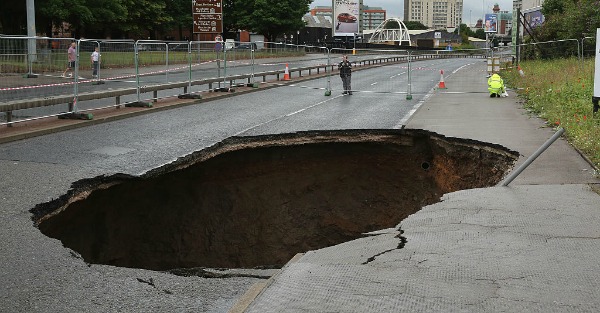A sinkhole is one of the scariest things you could ever encounter on a road. Suddenly and without warning, an entire chunk of pavement just isn't there. There is little in the way of prevention or detection for these terrors, so you basically just have to accept them as inevitable. Ok, so encountering a sinkhole isn't the biggest worry on the road since you are going to pass hundres of distracted cell phone users before you ever see a sinkhole, but they are pretty scary nonetheless. Even though we can't really predict them, Practical Engineering has allowed us to at least understand them. It is actually pretty simple.
If a buried waterline leaks, or if there is a period of exceptionally heavy rain, that water has to go somewhere and it is taking the ground along with it. This process can be slow or almost instantaneous depending on the flow of water, but the end result's are similar. The water takes dirt/sand/whatever with it as it flows underground, creating a cavity that grows until it can no longer support the ground above it. Eventually there is nothing left but a strip of road to hold up this bug-eyed truck and it falls right in.
Hopefully you never experience a sinkhole opening up underneath you, but if you do, you can now explain to your passengers exactly why the earth has decided to swallow them whole. They will really appreciate the lesson while they scream in terror as they plummet into the depths.
Related: Huge Sinkhole Swallows Up a 55,000-Pound Tractor Trailer in Georgia
